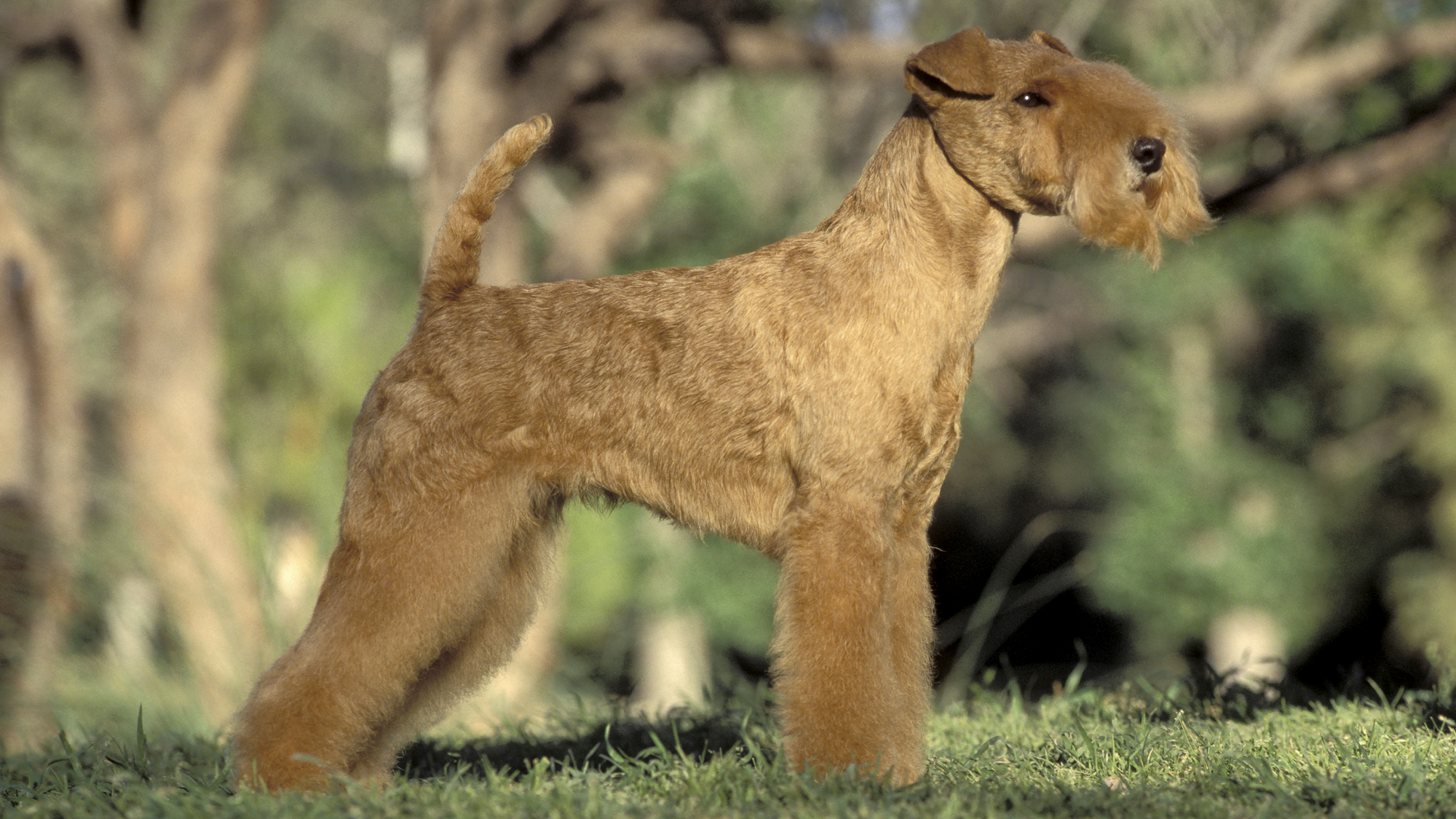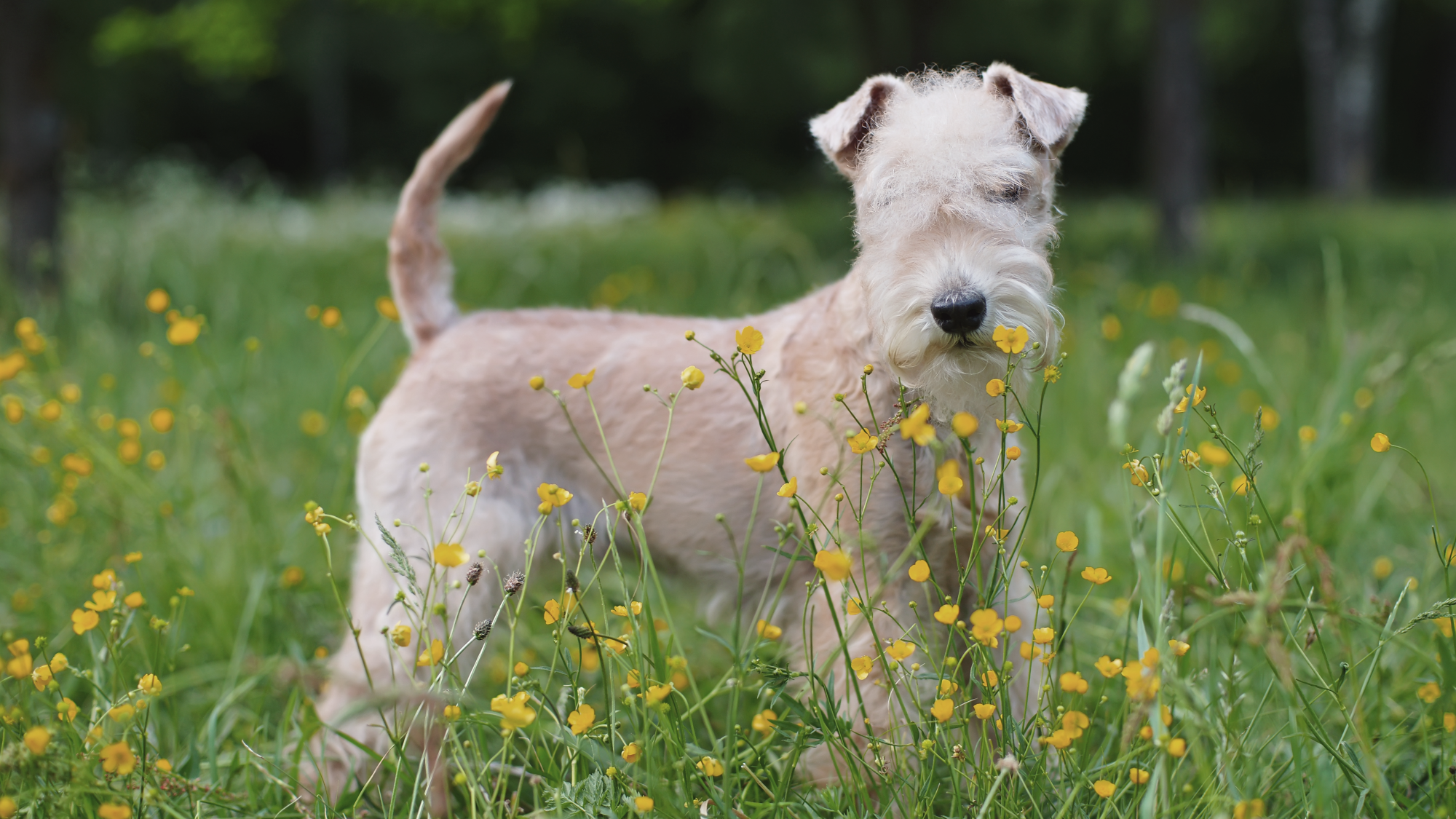
Let's talk Lakeland Terriers
With their rectangular-shaped head, the Lakeland Terrier is often mistaken for a Welsh Terrier. Originally bred in the Lake District to hunt foxes, the Lakeland Terrier is a small-sized dog with plenty of personality. They form a strong bond with their humans but require an active and patient owner, due to their terrier traits, which include digging, a tendency to bark, and an independent streak. Lakeland Terriers are high energy with a free-spirited nature, and adapt well to apartment life, so long as they get enough exercise. With the right owner, this confident canine will make an affectionate addition to the family unit.Official name: Lakeland Terrier
Other names: Patterdale Terrier, Working Terrier, Westmoreland Terrier
Origins: U.K.

| Drooling tendencies |
|
Warm weather? |  |
| Shedding level |  |
Suited to apartment living? |  |
| Energy level (high, low, medium)*: | Low | Family pet? |
|
| Compatibility with other pets | *Can stay alone?* | 
|
*We advise against leaving pets alone for long stretches.
Companionship can prevent emotional distress and destructive behaviour. Speak to your veterinarian for recommendations.
Every pet is different, even within a breed; this snapshot of this breed’s specifics should be taken as an indication.
For a happy, healthy and well-behaved pet, we recommend educating and socialising your pet as well as covering their basic welfare, social and behavioural needs.
Pets should never be left unsupervised with a child.
Contact your breeder or veterinarian for further advice.


| Baby age: | Birth to 2 months |
| Puppy age: | 2 to 10 months |
| Adult age: | 10 months to 8 years |
| Mature age: | 8 to 12 years |
| Senior age: | from 12 years |

1/7
Get to know the Lakeland Terrier
All you need to know about the breed
The Lakeland Terrier makes life more interesting with their insatiable curiosity, courageous spirit and affectionate temperament. Once trained, the breed is an excellent (and tireless) playmate for children. Supervision around little ones is always advised, as with all breeds.
The breed will do well with a confident owner who can temper those terrier traits while accepting them for who they are: Lakeland Terriers have a passion for digging and an independent streak (just don’t call them stubborn to their face)
Their compact size means that Lakeland Terriers adapt well to apartment life - so long as they get their daily exercise and play sessions. The Lakeland Terrier is on high alert most of the time, making for a great watchdog. However, this also means a leash is required when outside in pedestrian areas to prevent them from chasing smaller animals or following a scent.
Lakeland Terriers are a rare breed so if you have your heart on welcoming one into the family, expect to be put on a waiting list. They will be more than worth the wait with their charming confidence and bold temperament.

2/7
2 facts about Lakeland Terriers
1. A vocal canine
Like all terrier dogs, the Lakeland Terrier can enjoy barking a little too much. This can be tempered through training and there is one benefit: Lakeland Terriers often make great watch dogs, using their bark to warn of potential danger.
2. Loves a scent
The Lakeland Terrier has working dog roots, so if you have a garden make sure there’s a high, secure fence. This will help prevent your Lakeland Terrier from wandering off if their nose picks up an exciting scent. Or digging their way out of your garden—another classic terrier trait!
History of the breed
The Lakeland Terrier is a hardy working dog whose canine ancestors were required to navigate rugged terrain in all kinds of British weather (so mostly rain). The bold temperament of the Lakeland Terrier is a nod to their breeding origins, where they were required to keep sheep safe from foxes during lambing season.
The Lakeland Terrier descends from a mix of several terrier breeds that include the Old English Black and Tan Terrier (now extinct) and the Border Terrier. They carry the honour of being one of the oldest working terrier breeds to still be used today but have evolved into an affectionate and protective family dog.
It may come as a surprise to some that this working dog breed has performed exceedingly well in illustrious dog shows, such as Crufts and Westminster. The Lakeland Terrier was recognised by The Kennel Club in 1921, followed by the American Kennel Club in 1934. Sadly despite all their great qualities, the Lakeland Terrier is a very rare breed, with “threatened native breed” status via the American Kennel Club.

4/7
From head to tail
Physical characteristics of Lakeland Terriers
1. Body
A compact body with a narrow chest and strong back.
2. Coat
Coat is dense and wiry to the touch, and low-shedding.
3. Ears
V-shaped ears with tips that fold forward toward the outside corner of the eye.

5/7
Things to look out for
From specific breed traits to a general health overview, here are some interesting facts about your Lakeland Terrier

6/7
Caring for your Lakeland Terrier
Grooming, training and exercise tips
Lakeland Terriers are not big shedders so one weekly brush will remove any loose hair and prevent matting. Professional services may be required to hand pluck their coat but clippers may also be used—however, this can cause their coat colour to fade over time. Weekly nail trims will prevent tearing and maintain good oral hygiene with regular brushing of their teeth (daily is ideal). As a small dog with high energy, the Lakeland Terrier enjoys staying active with their humans. A combination of short brisk walks, play sessions in the fenced garden, and a leisurely stroll will burn off that terrier energy. The aim is around one hour of exercise per day. When training your Lakeland Terrier, be warned that they’re easily bored. Their intelligence makes them quick learners but their independent nature means they may not listen to you. Start early, be patient and provide a variety of training exercises to keep your Lakeland Terrier in peak mental and physical shape.7/7
All about Lakeland Terriers
Despite their curious temperament, Lakeland Terriers are quite often reserved around strangers, preferring to suss them out first. Coupled with their terrier alertness and boldness, Lakeland Terriers can make for great watch dogs!
Absolutely. Lakeland Terriers may be feisty but they make for affectionate family dogs. With proper training and socialisation, they are a playful and friendly breed, who get on well with young children (although supervision is always advised).
translations.feature.breeds.otherbreeds
Read more on this topic

How your dog's nutrition needs change with age

How to adopt a dog

Things to consider before getting a dog
Sources
1 - Veterinary Centers of America https://vcahospitals.com/
2 - Royal Canin Dog Encyclopaedia. Ed 2010 and 2020
3 - Banfield Pet Hospital https://www.banfield.com/
4 - Royal Canin BHN Product Book
5 - American Kennel Club https://www.akc.org/



